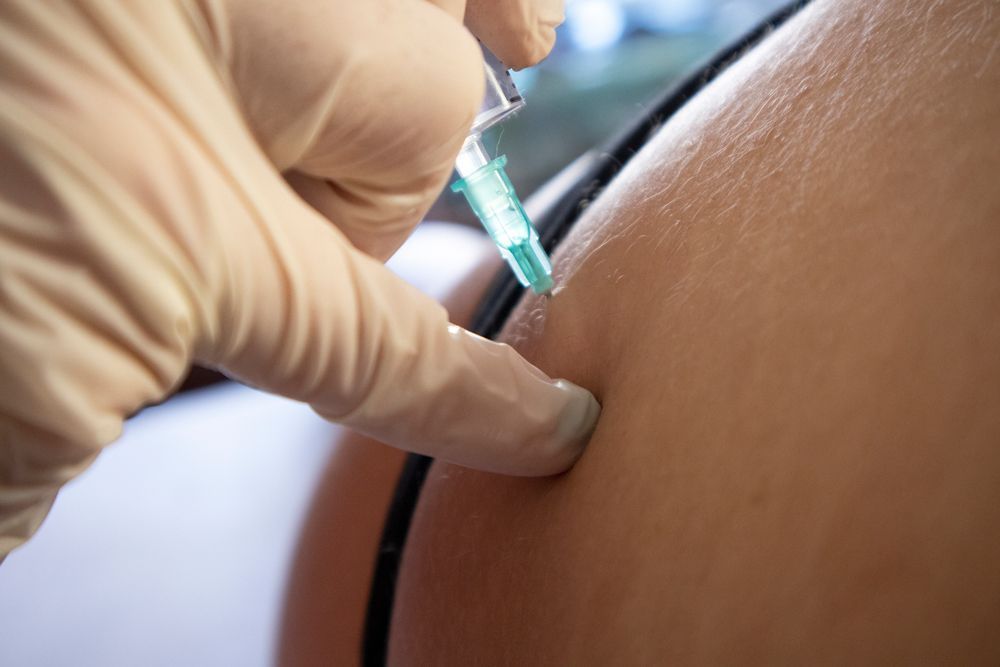
It is the application of corticosteroid injection into the skin or into the lesion in the relevant area.
A) Before Application
1- The application room should include minimum equipment and cleaning, taking into account the complications of minor surgical interventions.
2- Before starting the application, the patient should read and sign the informed consent, which includes detailed information about complications that may occur during and after the intralesional corticosteroid injection. In this process, necessary time should be allocated to inform the patient.
3- The records and photographs of the patient should be archived in a suitable environment.
4- During the application, personal hygiene protective measures (for example, wearing gloves) should be carried out in accordance with the rules.
B) Application
1- Depending on the desired concentration, long-acting slow-release storage cortisones are diluted in the tissue. Your doctor will decide the dilution rate according to the area to be applied, the width of the area, the presence of additional systemic disease and your disease.
2- After the application area is examined and a possible infection is excluded, it is photographed.
3- The application area is cleaned with alcohol-based gauze.
4- The patient is reminded that the application can be painful and therefore anesthesia can be applied before the application. In patients who require anesthesia, anesthesia can also be applied as recommended by your doctor.
5- Injection points are marked at 1 cm intervals in the lesional area and injection is made.
Slight bleeding during the application is applied with sterile dry gauze pads.
C) After Application
1- The application can be repeated at intervals of 4-6 weeks. If there is no cosmetically acceptable hair growth after 6 months in applications for alopecia, the treatment option should be changed.
Side Effects and Complications
A) Common: Pain and bleeding. Pain is generally tolerated. However, in children, it may be prominent in localizations such as palms and soles. Minor bleeding may occur at the injection site.
B) Rare: Atrophy, hypopigmentation, hyperpigmentation and telangiectasia. Deep, frequent or high concentration drug administration increases the risk of atrophy.
